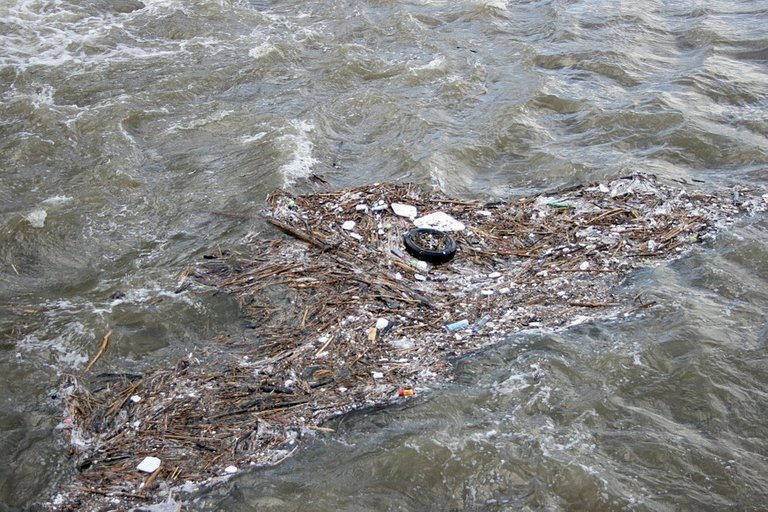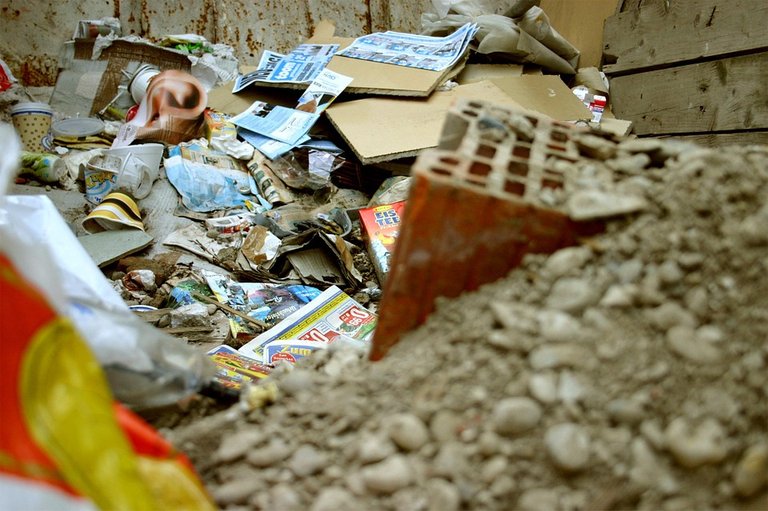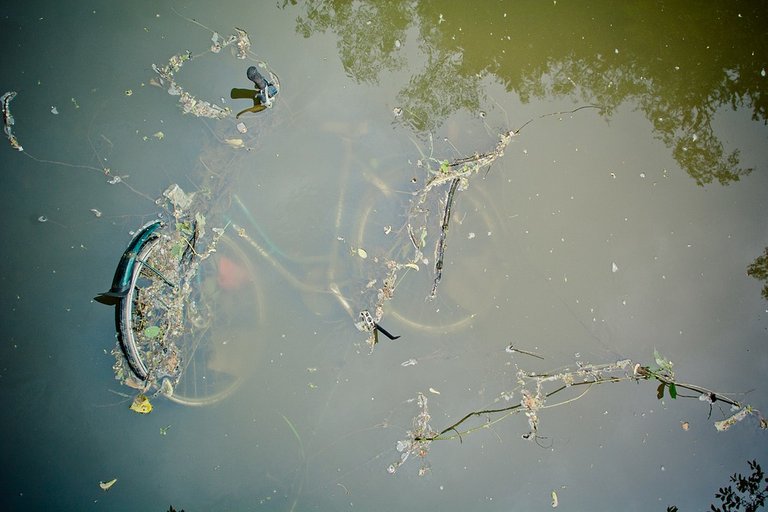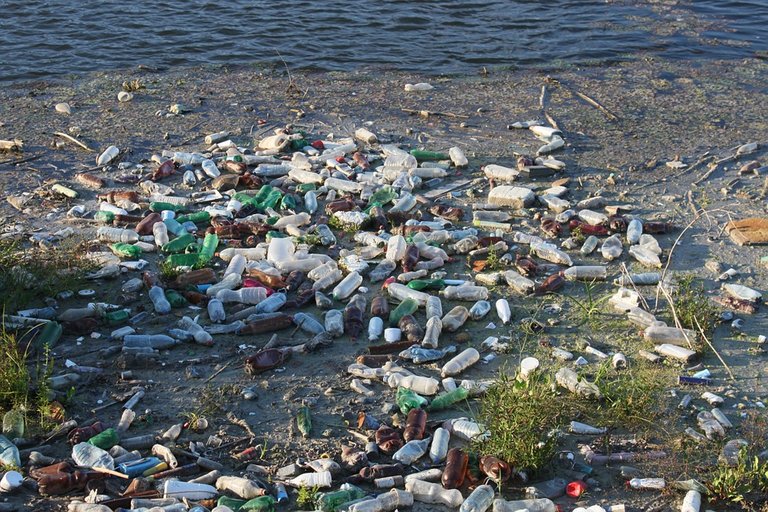


River is the greatest impact on urban environmental pollution

Basically Water Pollutants, grouped into:
The waste in the process of decomposition requires oxygen : garbage containing organic compounds, such as food industry waste, sugar cane industry waste, household waste (food scraps), human waste and animal waste, dead vegetation and animals. For the process of decomposing the waste requires a lot of oxygen, so if the trash is contained in water, then the water (water source) will be deprived of oxygen, fish and organisms in the water will die lack of oxygen. In addition, the process of decomposing waste containing protein (animal / vegetable) will produce H2S gas that smells rotten, so the water is not feasible to drink or to bathe.
Pollutants cause disease: pollutants containing viruses and bacteria eg bacteria that can cause gastrointestinal diseases (dysentery, cholera, diarrhea, types) or skin diseases. This pollutant comes from household waste, hospital waste or from animal / human waste.
Inorganic / mineral compound contaminants: heavy metals such as mercury (Hg), cadmium (Cd), lead (pb), copper (Cu), inorganic salts. Contaminants such as heavy metals that enter the body usually through food and can be buried in the organs of the body such as kidneys, liver, spleen digestive tract other so disrupt the function of the organs.
Organic pollutants that can not be broken down by microorganisms: organic compounds derived from pesticides, herbicides, polymers such as plastics, detergents, synthetic fibers, industrial waste and waste oil. This pollutant material can not be destroyed by microorganisms, so it will mount everywhere and can disrupt the lives and welfare of living things.
Pollutants in the form of plant foods: nitrate compounds, phosphate compounds can cause the growth of algae (algae) by leaps and bounds so that it covers the surface of the water. In addition it will disrupt the water ecosystem, deadly fish and organisms in the water, because the oxygen and sunlight levels are reduced. This is due to the oxygen and sunlight that the organism needs in the water (aquatic life) is blocked and can not enter the water.
Pollutants in the form of radioactive substances, can cause cancer, damage cells and other body tissues. This pollutant comes from nuclear waste and from other nuclear experiments.
Contaminants of sediment / sediment: soil and sludge due to erosion on riverbanks or solid particles / lava ejected by erupting volcanoes, causing water to become turbid, reduced sunlight entry, and water less able to assimilate waste.

Causes of River Pollution
River Pollution Caused by Nature
Forest Fires, Forest fires do not significantly cause changes in water quality in rivers, but forest fires can disrupt the living ecosystems of rivers caused by smoke. The thickness of the smoke causes the sun to penetrate the depths of the ocean. Ultimately this will make some plant species living in the river slightly blocked for photosynthesis and difficulty breathing fish due to excessive CO2 content.
Erosion Deposition, the thickness of the eroded mud will undergo deposition downstream of the river. The threat that arises is the overflow of the river due to continuous erosion. When the rain water no longer has a barrier in holding its speed then it will bring all the grains of land that is above it to enter into the existing rivers. The result is the river becomes a bit turbid. This will continue to recur when there is rain on the mountain or upstream.
Desposition of Acid, Excess acid in the river will result in at least surviving species. Types of plankton and invertebrates are the first creatures to die from the effects of acidification. If the river has a pH below 5, more than 75% of the fish species will be lost (Anonymous, 2002). This is due to the influence of the food chain, which significantly affects the sustainability of an ecosystem. Not all rivers affected by acid rain will become acidification, where rock and soil types have been found that can help neutralize the acidity.
Volcanic eruptions, volcanic eruptions cause rivers or lakes to be polluted due to rocks and materials carried from the mountains to settle in the river. If the material is deposited in a large volume, then this causes the fish to die when stacked by the rocks. In addition, the material with a small volume causes cloudy streams and affect the ecosystem in the river.
River pollution caused by human activities
Waste Settlement, Settlement waste contains domestic waste in the form of organic waste and inorganic waste and detergent. Organic waste is garbage that can be decomposed or decomposed by bacteria. Examples of vegetable, fruit, and leaf residues. Inorganic waste such as paper, plastic, glass or glass, cloth, wood, metal, rubber, and These garbage can not be broken down by bacteria (non biodegrable). Organic waste discharged into the river causes a decrease in the amount of dissolved oxygen, since most bacteria are used for the decomposition process.
Agricultural Waste, Fertilizer and pesticide commonly used by farmers to take care of the plants. However, excessive use of fertilizers and pesticides can contaminate water. Phosphate fertilizers contain phosphates that can stimulate the growth of aquatic weeds such as algae and water hyacinth. This uncontrolled weedwater growth causes such effects as pollution caused by detergent.
Industrial waste, industrial waste is very potential as a cause of pollution of river water. In general, industrial waste contains B3 waste, which is hazardous and toxic materials. According to PP 18 years 99 article 1, "B3 waste is the residue of a business or activity containing hazardous and toxic materials that can pollute or damage the environment so that endangering the health and survival of humans and other creatures." Characteristics of B3 waste is corrosive / causal rust, flammable and explosive, toxic / toxic and cause infection / disease. Hazardous industrial wastes, among others, containing metals and acidic liquids. For example, waste produced by metal coating industry, which contains copper and nickel and cyanide acid, boric acid, chromic acid, nitric acid and phosphoric acid. This waste is corrosive, can kill plants and aquatic animals. In humans cause irritation to the skin and eyes , interfere with breathing and cause cancer.


Supporting literature / Reference
- All photos from pixabay.com
- Sastrawijaya, A. Tresna. (1991). Pencemaran Lingkungan. Jakarta: Rineka Cipta.
- Soemarwoto, Otto. (2004). Ekologi, Lingkungan Hidup, dan Pembangunan.Jakarta: Djambatan.
- Muhammad, Yunus. (2007). “Pengertian dan Sumber Pencemaran Perairan” [Online].Tersedia:http://yunuzmuhammad.blogspot.com/2007/11/pengertian-dan-sumber pencemaran.html.[3 Mei 2011].
All about my article
part1
part2
part3
part4
part5
part6
part7
part8
part9
part10
part11
part12
part13
part14
part15
part16
part17
part18

by : @rabo
You received a 60.0% upvote since you are a member of geopolis and wrote in the category of "ecology".
To read more about us and what we do, click here.
https://steemit.com/geopolis/@geopolis/geopolis-the-community-for-global-sciences-update-4
Despite the many existing pressures on our water resources, there are cost-effective solutions that will allow us to transform our relationship with water. To address increasing water scarcity in many places in the nation, NRDC is working to promote investments and policies that increase water use efficiency and decrease water waste, such as:
the biggest problem is the lack of public awareness to preserve the environment, the government must be proactive to socialize the importance of maintaining the surrounding environment.
Thank you for sharing
thank you @uyobong, I really appreciate to people who care about the environment, with the progress of the times and low levels of knowledge by the community, our environment is increasingly damaged. therefore, we must always pursue that the importance of preserving the environment.